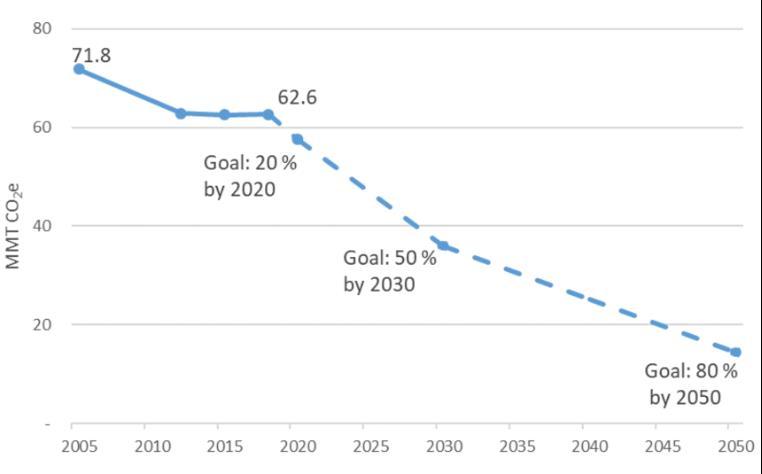Cutting Transportation Emissions by 2030 and Beyond
Need to Address Driving and Land Use, as well as Cleaner Vehicles, to Meet Targets Multiple studies and experience from other regions have shown that vehicle electrification and improved fuel economy, while essential strategies, are not sufficient to meet our climate targets. These studies conclude that reducing auto vehicle miles traveled (VMT) by making better land use policies that reduce the need to drive and by investing in more sustainable and equitable transportation modes is an essential component of lowering our transportation-sector GHG emissions.
National-Level Studies Showing Need to Reduce Driving Electrification of light-duty vehicle fleet alone will not meet mitigation targets (Milovanoff, Posen, and MacLean, Sep. 2020)5 A recently published landmark academic study in the journal Nature Climate Change finds that reducing U.S. transportation-sector GHG emissions through vehicle electrification is not feasible without reducing driving and car ownership and major increases in fuel economy standards for conventional vehicles.
“We’ll never reduce emissions or create livable and equitable communities if we don’t find ways to allow people to get around without a car…Electric cars are key to reducing emissions. But it’ll take decades for every car in the U.S. to be electric. We need to do more to reduce our emissions.”
− Smart Growth America, Driving Down Emissions
Decarbonizing US passenger vehicle transport under electrification and automation uncertainty has a travel budget (Alarfaj, Griffin, and Samaras, Sep. 2020)6 Another study shows that ride sharing and travel demand policies must complement electric cars and clean electricity to increase the likelihood of meeting our climate targets.
Driving Down Emissions: Transportation, land use, and climate change (Smart Growth America and Transportation for America, Oct. 2020)7 Smart Growth America’s report shows in plain terms why sprawling development leads to more driving, GHG pollution, and other negative consequences. The report recommends that we: 1. Meet the demand for homes in walkable, compact neighborhoods 2. Build safer, walkable streets 3. Set targets for VMT and GHG emissions reductions 4. Provide transportation options and make transit a priority 5. Prioritize connecting people to destinations
3








